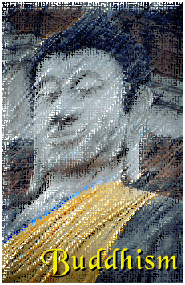|
Shakyamuni Buddha, also named Gautama, was born into the ruling family of the Shakya clan. After his enlightenment he began teaching what he had characterized as a method of awakening to reality. As he taught the ways of the Buddha his dedicated followers formed into a community of monks and nuns. It was those monks and nuns that continued his teachings onto the following generations. In Buddhism there exists the cycle of birth and rebirth. The key goal from these teachings is the ability to acquire merit along with a firm belief in good karma as a means of ensuring this prosperous rebirth if not achieving Moksha (freedom from Samsara).
|
Hinduism has no historical founder or single being connected with its beginning. There is no single book or sacred text to define what it means to be Hindu. Hinduism is a religion focusing primarily on dharma and moksha. It is socially structured based upon Varna and Ashrama and assigns individuals to one of four classes: Priests (Brahmins), Rulers/Warriors (Rajas), Farmers/Merchants, and the servants/laborers (Shudras). All of these individuals together share one common goal, the desire to achieve release from the cycle of birth and rebirth.
|
|
 |
 |